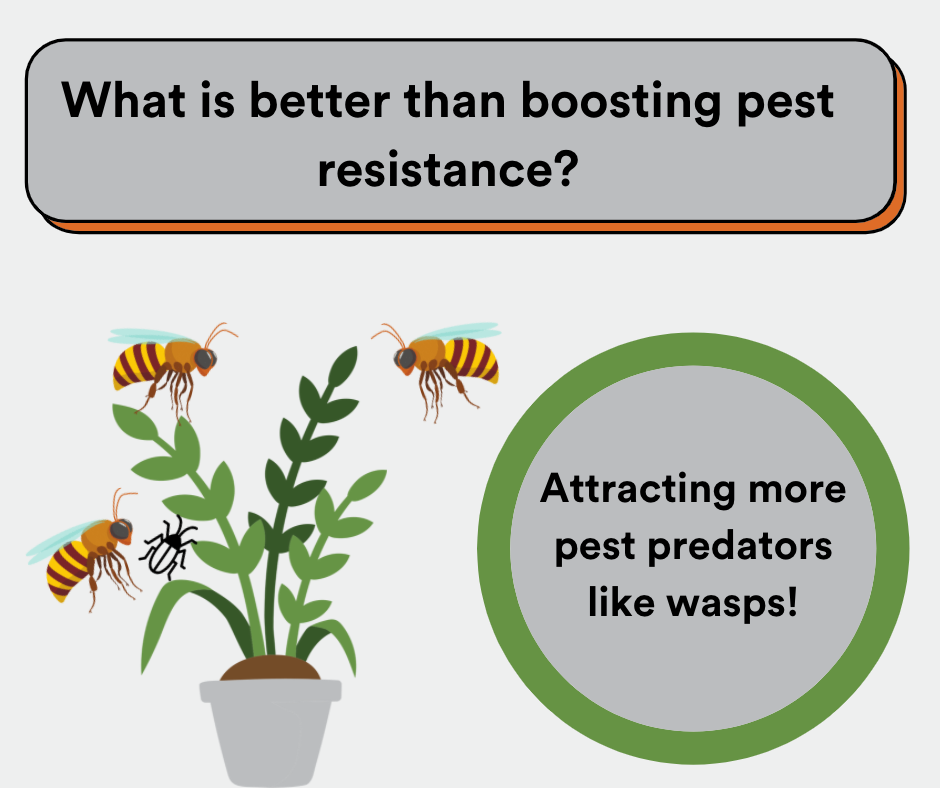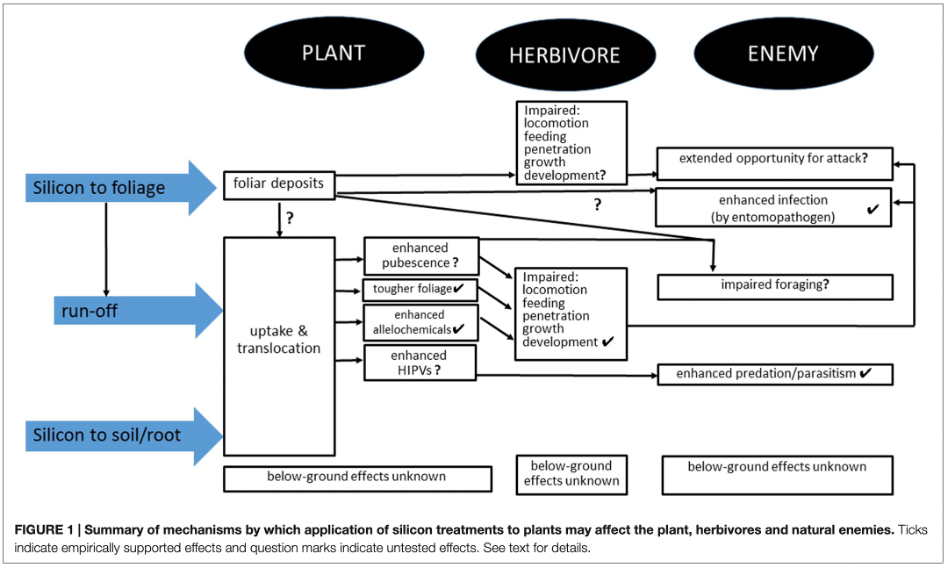Fertilizing with silicon amendments can attract predator insects for common pests

This week we added two studies to our growing agricultural research database. These two studies are a few years old, but the concept is a new and exciting discovery for us. Ready?
Fertilizing with silicon has been shown to increase the number of natural predator insects (the insects that EAT the pests) on the silicon fertilized plants.
Here are two telling quotes from this research:
“Results suggest that Si applied to plants with a subsequent pest infestation increases the plants’ attractiveness to natural enemies…” ~Study 1
“…several studies now describe tri-trophic effects involving silicon that operate by attracting predators or parasitoids to plants under herbivore attack. Indeed, it has been demonstrated that silicon-treated, arthropod-attacked plants display increased attractiveness to natural enemies…” ~Study 2
Tri-trophic describes three levels of the food chain: the plant feeds the pest that feeds the predator. A pest-infested plant would likely attract predators because it is an easy meal, but in this case, the healthier plants fertilized with silicon attract more predators.
Why does wollastonite help attract predators?
We don’t know for sure yet; there are a few suggestions in the picture below under the enemy column. Regardless, helping natural enemies protect crops from pests is a turn-key solution to reducing costs and chemical use in agriculture while protecting and enriching ecosystem health.
The chart below is a summary of ideas and evidence that might be responsible for this phenomenon.
Study 1) Silicon enhances natural enemy attraction and biological control through induced plant defences.pdf

